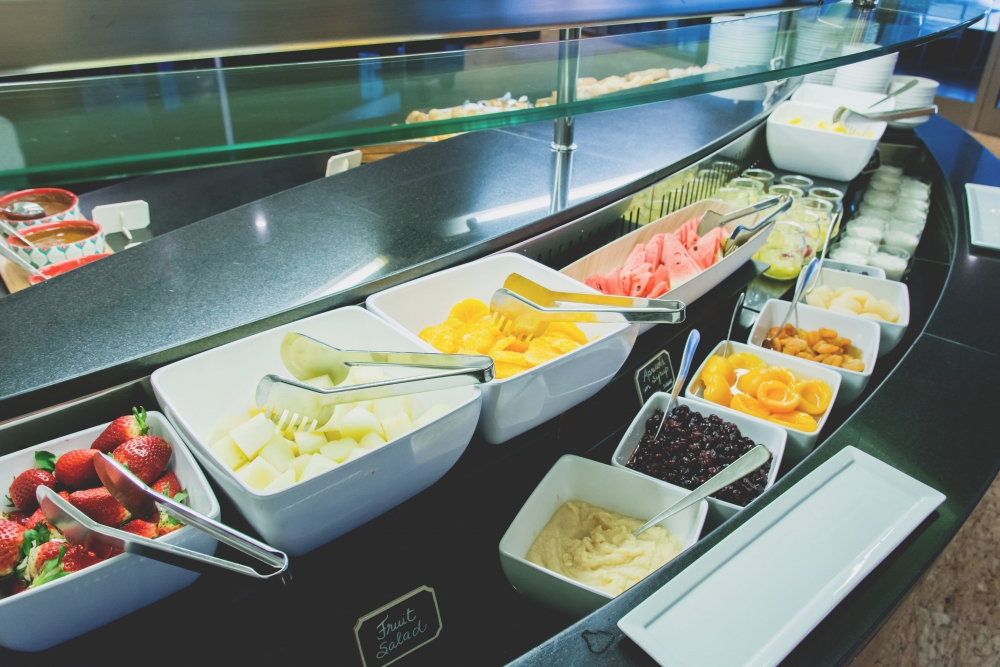
Low-Hanging Fruit

For seven years now, the University of California system has been working hard to reduce its carbon emissions as part of its Carbon Neutrality Initiative. Each campus has been charged with finding ways to cut greenhouse gas emissions through a variety of measures — such as increased energy efficiency and replacement of fossil fuel sources with renewable energy — to meet milestones on the road to carbon neutrality.
While the campuses focus on mitigating the initiative’s Scope 1 direct emissions from gas combustion, campus vehicles and fugitive emissions, as well as Scope 2 indirect emissions from purchased electricity, two UC researchers are looking ahead to Scope 3 — indirect emissions from products and services the campuses sell. David Cleveland, a UC Santa Barbara professor of environmental studies, and UCLA’s Jennifer Ayla Jay, a professor of civil and environmental engineering, have campus food systems squarely in their sights. This is significant, according to the researchers, given that these types of indirect emissions can be some of the institutions’ largest sources of greenhouse gases.
“Food is a huge part of our climate impact,” said Cleveland, who with Jay co-authored a paper that appears in the journal Climate Policy. Few climate change mitigation policies incorporate food system greenhouse gas emissions (GHGE), he added, despite the fact that the food system contributes about 30% of anthropogenic GHGE, mostly from animal-source foods.
“It’s low-hanging fruit,” Cleveland said of the opportunity to reduce indirect GHGE by shifting UC campus food systems toward more plant-based items and away from animal sources, and reducing food waste. “It doesn’t involve changing our energy grid or converting from natural gas, which are huge infrastructure investments. Changing the food system is relatively quite inexpensive.”
The key to understanding food’s carbon emissions, he explained, lies in examining the amount of energy and resources that go into producing it, and the greenhouse gases that are emitted as a result of those practices.
“The fundamental thing is that animals eat plants,” Cleveland said, noting that in doing so the plants are converted to become part of the animal and the nutrition it provides when the animal is eaten.
“However, there are a lot of nutrients and energy spent just keeping the animal alive and doing that conversion,” he explained. In the case of beef, for example, large quantities of water, grain and soil nutrients are needed to produce a single pound of meat, in addition to the energy required to process and transport it.
“It’s much more efficient and less impactful to eat plants directly,” he said.
For their study, the researchers used the 10-campus, 280,000 student UC system as a case study and, according to the paper “created scenarios using studies of U.S. dietary changes and existing, planned and potential UC food system changes.”
By changing the food system, including moving away from animal source foods, the researchers found that food emissions could be reduced “by 42-55%, equivalent to 8-9% of UC’s targeted energy GHGE reduction, and 19-22% of the carbon offsets the UC system would have to buy to meet its target.”
“We don’t have to go vegetarian or vegan,” Cleveland said, “but we could be moving toward diets that are more climate friendly.” Red meat (lamb and beef) has the largest carbon footprint. By switching to other types of meat such as chicken, UC food systems can cut down on their emissions. The closer they get to plant-based protein sources, the smaller the footprint becomes. Choices like these, in addition to measures such as reducing food waste, can put UC on its way to the Scope 3 emission reductions that the system wants to achieve by 2050 while also cutting down on offsets.
There’s no better time to start reimagining the UC system’s campus food services in a way that can cut down on carbon emissions, said Cleveland, adding that relatively small changes — replacing a fraction of red meat with plant-based alternatives, or making the vegetarian selection the default item on the menu — can steer choices to foods that are not only lower impact on the environment but also healthier and often lower cost.
“We can do it right now on our campuses,” he said. “And we can have all these co-benefits because it’s very easy to have climate-friendly food that is also healthier, delicious and more socially equitable than more climate-damaging food.”



